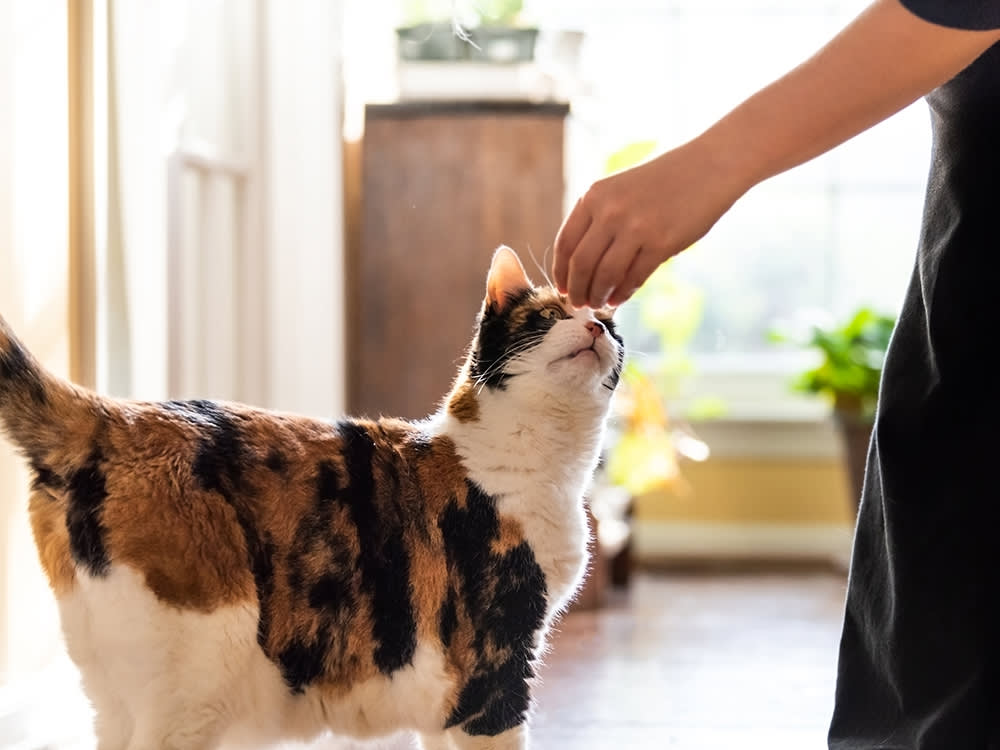Can You Train a Cat?
All snarky “herding cats” references aside, yes, you can train that little mastermind who, up to now, has probably been training you. Their somewhat earned reputation for independence has perpetuated the myth that cats are above training. They might not show their cards the way our exuberantly live-to-please dogs do, but with the same principles of patience, high-value treats, and positive reinforcement, you can train that kniving furball of yours.
And guess what, you’ve probably already been doing it. When we open our cats’ food tins, or pick up their bowls, they teleport across the house to appear at our feet without fail — that’s recall. An encouraging pat on the couch/bed and your cat will likely continue to jump up and on - that’s stationing. Pack a suitcase, telegraphing you’re going away, and your cat stages a suitcase sit-in - that’s negative conditioned emotional response/anxiety.
Save on the litter with color-changing tech that helps you better care for your cat.
In stark contrast to dogs, most of us cat people don’t know how to train our felines for daily life situations which could hugely improve their welfare, happiness, and bond with us. Sometimes we even inadvertently signal our cats to do the opposite of what we want. Take, for example, that seemingly non-threatening object: the cat carrier. We all bring it out the day of a vet visit right? Wrong. Your cat has now learned their carrier = vet. Good luck prying them from under the bed next time it appears. Good news though -- you can flip your cat’s script by leaving the carrier out more often and using treats and toys to make it more of a hang-out haven for your cat to pop into by choice.
If you’ve been unintentionally training your cat, now is a good time to start making training intentional. Here are just 7 reasons why you’ll become a cat-training convert:
How much do you spend on your pet per year?
1. It’s actually fun for both of you
2. Strengthens the bond between you
3. Gives your cat both mental and physical enrichment
4. Decreases potential behavioral issues
5. Makes vet visits and care, such as nail trims, less dramatic
6. Helps your cat get ready for change, such as a move
7. Gives your cat better things to do than carving initials into your furniture
Before you start training, what do you want to teach your cat? Fun tricks? To take medications easily? To not associate vet visits with the end of the world? To actually like playing with you? Whatever your goals, positive training and your cat’s natural intelligence can make just about anything possible. In fact, training helps cats so much that shelters are now teaching their adoptable cats tricks like nose target, spin, high five, and sit to make them irresistible to adopters. Yes, please.
One cue you can try out with your cat for instant success is “sit.” TBH, cats sit a lot naturally, so you can quickly transform it to a fun trick to impress your cat-doubting friends or as an alternative behavior if your cat begs for food.
The prep to set the stage:
Know what treats your cat deems worthy of the effort. Canned tuna, salmon, or soft chicken treats are good bets.
Condition your cat to a clicker or a marker word like YES/GOOD/click- treat.
Bring patience - take it slow and set your cat up for success by making it easy and then slowly increasing criteria.
Always train in a quiet room with limited distractions.
Stick to a maximum of 3 training sessions, 3 minutes per day- no more.
How to train your cat to sit:
1. Sit or kneel next to your cat so you’re not looming over (this can be scary to cats who much prefer towering over you)
2. Hold a treat between your thumb and index finger right above your cat’s nose
3. Slowly, move the treat higher so your cat looks up, and then move a few inches toward the tail (like a small line from nose between the eyes, to head)
4. If your cat’s eyes follow the treat, a sit should happen naturally. As soon as it does, mark/click and treat
5. Then toss a treat a bit away, so your cat resets to start again.
6. If not, simply hold the treat in place for around 10 seconds and wait for your cat to figure it out. If after 10 seconds it doesn’t click, stop and work in smaller steps
7. After your cat has successfully done the cue 5 times, integrate the word “sit” as a verbal cue, and repeat successfully 5 times
8. To help proof the cue, use your hand without the treat to help your cat with both a verbal and visual cue
It bears repeating: Make sure you train your cat for a maximum of 3 minutes, and then give them a break. Overtraining can cause your cat to be frustrated and overstimulated. Relatable, right?
Some cats need longer than others to master a cue, and that’s fine. The goal should be to work at your cat’s pace. If your cat doesn’t get the cues at all or walks away during training, they’re just not that into it and could be confused or stressed. Start again later, make it easier for them to be successful and keep training as a fun thing for you and your cat to do together!



